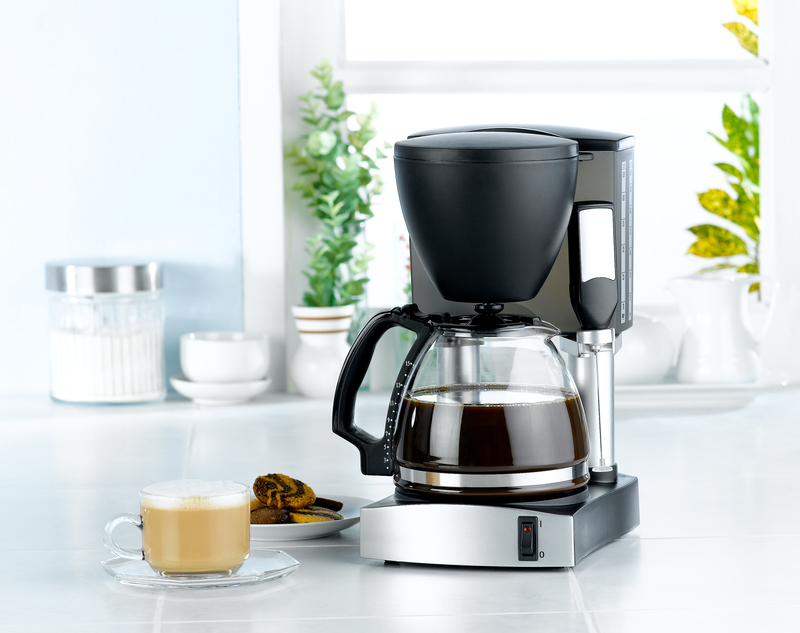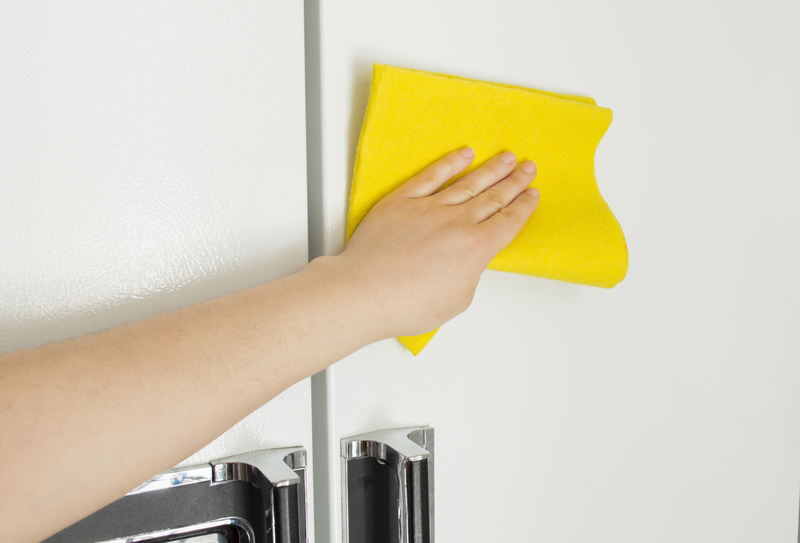Cleaning Burnt Residue Off Your Stovetop: Power Tips and Tricks
Posted on 18/09/2025
Cleaning Burnt Residue Off Your Stovetop: Power Tips and Tricks
Cooking up a storm in your kitchen often leads to delicious meals, but sometimes it leaves behind a less appetizing aftermath -- burnt residue on your stovetop. Whether you have a gas, electric, or glass stovetop, tackling stubborn burnt-on messes can seem daunting. But with the right cleaning techniques, tools, and a little patience, you can restore your stovetop's shine and maintain a sparkling, sanitary cooking surface.
In this comprehensive guide, we'll share effective methods, pro-tips, and natural solutions for cleaning burnt residue off your stovetop, ensuring safety and preserving your appliance's lifespan.
Why Proper Stovetop Cleaning Matters
A clean stovetop isn't just aesthetically pleasing -- it's essential for kitchen safety, hygiene, and efficient cooking. Burnt-on food and grease can harbor bacteria, create unpleasant odors, attract pests, and even become a fire hazard if left unchecked. Residue buildup may also impair burner performance, making your stovetop less efficient. Consistently removing burnt stains preserves the finish, prolonging the life of your kitchen appliance.

Understanding Your Stovetop: Types and Materials
To ensure the best cleaning results and avoid damage, it's crucial to know your stovetop type:
- Gas Stovetops: Feature grates and burners that can be removed for separate cleaning. Typically made of metal or enamel.
- Electric Coil Stovetops: Consist of metal coil burners that can be lifted or detached, with a drip pan beneath.
- Glass or Ceramic Cooktops: Flat and smooth surfaces that require special care to prevent scratching.
Different materials may call for varying cleaning products and methods. Always consult your appliance manual for specific guidelines before you begin.
Essential Tools and Supplies for Stovetop Cleaning
Before tackling burnt residue, gather these cleaning essentials for an efficient, safe process:
- Non-abrasive sponges or scrubbers
- Soft microfiber cloths
- Baking soda
- White vinegar
- Dishwashing liquid
- Spray bottle
- Plastic or silicone scraper
- Lemon juice or commercial stovetop cleaner (optional)
- Gloves to protect your hands
General Steps for Cleaning Burnt Food Off Your Stovetop
While specific approaches may differ by stovetop material, follow these broad steps to start the process:
- Turn Off and Cool Down: Before cleaning, ensure the stovetop is switched off and completely cool to avoid burns.
- Remove Removable Parts: Take off grates, burner caps, and drip pans. Soak these items in hot, soapy water while you clean the surface.
- Wipe Loose Debris: Use a dry cloth to remove crumbs, loose food, and powdery spills.
- Apply Cleaning Solution: Choose the right solution (gentle or powerful, depending on the stain and surface).
- Scrub Gently: Use a non-abrasive sponge or cloth to avoid scratching your stovetop.
- Rinse and Dry: Wipe down with a clean damp cloth, followed by a dry cloth to prevent streaks.
- Reassemble: Once all parts are clean and dry, put everything back in place.
Specialized Techniques: Removing Tough Burnt Residue
How to Clean Burnt Residue on a Gas Stovetop
- Soak Grates and Burners: For tough, burnt-on build-up, remove the grates/burner caps and soak them in hot, soapy water for at least 15-20 minutes.
- Use Baking Soda Paste: Make a thick paste of baking soda and water. Coat the stubborn residue and let it sit for 15 minutes to loosen the grime.
- Scrub with Sponge: Gently scrub with a soft sponge or nylon brush. For extremely tough spots, use a plastic/silicone scraper to avoid scratching.
- Rinse Thoroughly: Rinse grates and burner caps with warm water and dry completely before reassembling.
How to Remove Burnt Stains from Electric Stovetops
- Lift Coils: Carefully lift out the coil burners and set aside.
- Scrub Drip Pans: Remove the drip pans and soak them in a vinegar-water solution to dissolve burnt food.
- Baking Soda Scrub: Sprinkle baking soda on the drip pans, then scrub with a damp sponge.
- Clean the Surface: Wipe the main stove surface with a mixture of dish soap and water, followed by a rinse and dry.
Glass and Ceramic Stovetop Burnt Residue Removal
- Cool Completely: Ensure the cooktop is cool to the touch before cleaning.
- Spray with Vinegar: Spray the affected area with white vinegar and let it sit for 5-10 minutes to dissolve residue.
- Baking Soda Paste: Apply a thick paste of baking soda and water over burnt stains. Lay a warm, damp towel over the paste and allow it to rest for 15-20 minutes.
- Gently Scrape: Use a plastic scraper at a low angle to gently lift off softened residue. Be careful not to scratch the glass.
- Buff to Shine: Wipe with a clean, damp cloth, then buff with a dry microfiber cloth for a streak-free finish.
Natural Solutions for Burnt Stovetop Cleaning
Homemade, eco-friendly cleaning solutions are excellent alternatives to harsh chemicals and are safe for most stovetops. Try these DIY power combos:
- Baking Soda & Vinegar: Sprinkle baking soda over sticky residue, spray with vinegar, let fizz for a few minutes, then wipe clean.
- Lemon Juice: The natural acidity of lemon breaks down grimy, burnt-on mess. Squeeze lemon juice over stains, let sit, and scrub with a sponge.
- Salt & Vinegar: Great for extra scrubbing power without scratching. Mix a paste, apply to the area, rub gently, then rinse away.
Advanced Power Tips for Stubborn Burnt Residue
- Steam Cleaning: Boil a pot of water on the hob and allow the steam to loosen burnt particles before wiping down.
- Commercial Stovetop Cleaners: For especially stubborn burnt-on food, specialized stovetop cleaners may be effective. Always follow manufacturer instructions and spot test first.
- Razor Blade Scraper (Glass Stovetops Only): For extremely persistent stains, gently use a razor scraper at a low angle. Never use on ceramic, enamel, or painted surfaces.
- Soft-Bristle Toothbrush: Use a toothbrush for tight spots and around knobs where grime accumulates.
What NOT to Use on Your Stovetop
- Avoid Wire Wool or Steel Brushes: These can scratch and damage the surface permanently.
- No Harsh Chemicals or Oven Cleaners: Unless specifically designed for stovetop use, these chemicals may discolor or corrode your appliance.
- No Excessive Water: Water can seep into electric parts or underpanels, leading to damage or electrical hazards.
Preventing Burnt Residue on Your Stovetop
An ounce of prevention is worth a pound of cure! Maintain a cleaner stovetop by embracing these habits:
- Wipe Spills Promptly: Clean up food and liquid splatters while still fresh (and safe to touch), before they harden and burn.
- Use Drip Pans or Liners: Catch overflows and prevent direct contact with heating elements.
- Regular Maintenance: Include stovetop cleaning in your daily or weekly kitchen routine, even if only a quick wipe-down.
- Cook Smart: Stir and monitor food to minimize boil-overs and spills, and use the right pan size for each burner.
Frequently Asked Questions: Cleaning Burnt Stovetops
Q: How often should I deep-clean my stovetop?
Routine wiping should be done after each use, but deep-clean stubborn burnt residue and grates at least once a month, or more often for heavy use.
Q: Is it safe to use baking soda on all stovetop types?
Baking soda is generally non-abrasive and safe for most stovetops; however, always rinse well to prevent residue and test on a small area first, especially with glass or ceramic cooktops.
Q: What if burnt food won't come off after several tries?
Persist with repeated soaks and gentle scraping. Extremely old or carbonized stains may require a commercial cleaner or professional assistance.

Conclusion: Enjoy a Sparkling, Burnt-Free Stovetop
Learning how to clean burnt residue off your stovetop is a valuable kitchen skill, making your cooking space more efficient, attractive, and safe. By choosing appropriate cleaning strategies and maintaining regular upkeep, you can say goodbye to stubborn, burnt-on stains and prolong your stovetop's lifespan.
Remember, act quickly after spills, use gentle yet effective cleaning agents, and never underestimate the power of steam, baking soda, and a bit of elbow grease. With these power tips and tricks for cleaning burnt stovetops, you'll be back to cooking with confidence on a surface that gleams like new!
Further Reading
- How to Clean Your Cooktop (Consumer Reports)
- How to Clean Glass Stovetops (Good Housekeeping)
- How to Clean a Stovetop (Bon Appetit)
Try these tips today and restore your stovetop to a brilliant, hygienic finish!




